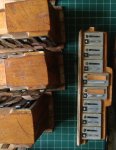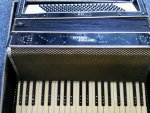Modern materials and production techniques produce mostly better products than days gone by. Is this true of accordion reeds?
How do modern reed manufacture compare with say 60 or 100 years ago?
Metal age hardens & also work hardens. So how are reed tongues affected?
I assume there was a time when all reeds were hand made? When did machine made reeds come into use?
Are hand made reeds from the early accordions better than modern m/c made reeds?
Should we be looking to rescue hand made reeds from 'antique' accordions? Or will they be not worth the trouble?
How do modern reed manufacture compare with say 60 or 100 years ago?
Metal age hardens & also work hardens. So how are reed tongues affected?
I assume there was a time when all reeds were hand made? When did machine made reeds come into use?
Are hand made reeds from the early accordions better than modern m/c made reeds?
Should we be looking to rescue hand made reeds from 'antique' accordions? Or will they be not worth the trouble?



